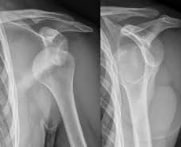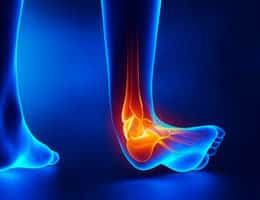 Originating from the Latin word luxatio , the concept of dislocation refers to an injury that involves the displacement of a bone . This dislocation means that the bone structure loses contact with the articular surfaces.
Originating from the Latin word luxatio , the concept of dislocation refers to an injury that involves the displacement of a bone . This dislocation means that the bone structure loses contact with the articular surfaces.
Dislocation is caused by a strong blow that causes the bones to separate from where they join in the joint . Thus, the dislocated bone leaves its normal location , which can cause damage to the nerves and surrounding ligaments.
When a dislocation occurs, two bones that were connected through a joint cease to be connected due to the application of a high intensity force. The person who suffers from this injury suffers acute pain and loses the functionality of the affected area, which becomes inflamed and can become deformed.
Sometimes it is difficult to distinguish between a dislocation and a fracture . Therefore, first aid is the same for both cases. Both situations involve an emergency that requires immobilization of the injured joint, complete rest of the area and the application of ice as an analgesic . After this first aid, it is essential to transfer the patient to a health center.
Below we will see the most common symptoms of a dislocation; Although some of them are not unique, knowledge of them is essential to distinguish this injury from a fracture:
* intense pain in the affected area;
* inability to move the joint as soon as the dislocation occurs;
* increase in volume and deformity of the joint;
* once the size is reduced again, neurovascular damage may occur;
* If a capsular-ligamentous rupture does not occur, then blood accumulates within the joint cavity .
Before receiving medical assistance, it is recommended not to make any unnecessary effort. Under no circumstances should we attempt to reposition the affected limb, unless we know exactly how to do so.
Once in the hospital, a radiological examination is performed in both planes to determine the type of injury. Through this procedure, the loss of contact that the articular surfaces suffer as a result of the dislocation can be observed, which can be total or partial. This is necessary in cases that do not exhibit obvious signs , such as deformity of the area.
Treatment depends on the individual's general health and age, as well as the extent of the dislocation. The doctor may immobilize the area with a cast or splint or indicate surgery , especially when there is a severe tear of the ligament, tendon , or muscle.
 The joints that are most frequently compromised by a dislocation are those of the shoulder, hip, knee and ankle. In the case of the shoulder, the number of anterior dislocations reaches 95 percent, while posterior dislocations occupy the remaining 5 percent.
The joints that are most frequently compromised by a dislocation are those of the shoulder, hip, knee and ankle. In the case of the shoulder, the number of anterior dislocations reaches 95 percent, while posterior dislocations occupy the remaining 5 percent.
With respect to the hip, a posterior dislocation usually occurs as a result of certain traumas such as a blow to the knee during a car accident that causes internal rotation, among other movements that are harmful to the body.
Knee dislocations are usually divided into two well-defined groups: those that affect the patella , very common in athletes, and those that affect the femorotibial joint.
Lastly is the group of ankle dislocations. It is one of the most common, especially because it does not require a very strong blow to occur, unlike those mentioned above. A lack of physical activity, being overweight or poor posture is enough for this type of injury to occur.
